-
 bitcoin
bitcoin $122288.232522 USD
0.16% -
 ethereum
ethereum $4480.662914 USD
-0.22% -
 xrp
xrp $2.962747 USD
-2.32% -
 tether
tether $1.000120 USD
-0.05% -
 bnb
bnb $1145.654223 USD
-2.07% -
 solana
solana $227.105217 USD
-1.67% -
 usd-coin
usd-coin $0.999548 USD
-0.02% -
 dogecoin
dogecoin $0.250875 USD
-2.04% -
 tron
tron $0.340654 USD
-0.49% -
 cardano
cardano $0.837968 USD
-2.52% -
 hyperliquid
hyperliquid $48.960449 USD
0.06% -
 chainlink
chainlink $22.049280 USD
-1.33% -
 ethena-usde
ethena-usde $1.000404 USD
0.02% -
 sui
sui $3.586212 USD
0.20% -
 avalanche
avalanche $29.894916 USD
-4.18%
What does a Bitcoin ETF typically include in its fee structure?
Bitcoin ETFs charge management fees (0.25%-1.0% avg) covering custody, compliance, and operations, with costs deducted from returns and impacting long-term performance.
Sep 29, 2025 at 11:54 am
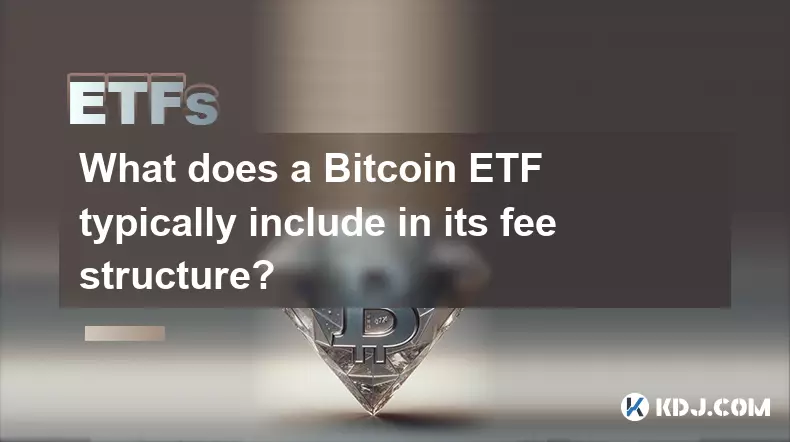
Management Fees in Bitcoin ETFs
1. Management fees are the primary cost component for a Bitcoin ETF, charged by the fund provider to oversee the portfolio and ensure compliance with regulatory standards. These fees are typically expressed as an annual percentage of assets under management and deducted directly from the fund’s net asset value.
2. The range for management fees varies significantly across providers, often falling between 0.3% and 2.5% per year. High-profile ETFs launched by major financial institutions tend to offer lower rates to attract institutional investors and gain market share.
These fees cover administrative tasks such as custodial services, auditing, and reporting obligations mandated by financial regulators like the SEC.3. Investors do not pay management fees directly; instead, they are automatically subtracted from the fund's returns, which means the performance reported publicly is net of these charges.
4. Fee compression has become common as competition increases among issuers, especially after the approval of spot Bitcoin ETFs in the United States, prompting firms to reduce costs to remain competitive.
Operational and Custodial Expenses
1. A significant portion of a Bitcoin ETF’s fee structure includes operational expenses related to securing and storing the underlying digital assets. Since Bitcoin must be held in cold storage or through regulated custodians, these services come at a premium.
2. Custodial fees are paid to third-party security firms that specialize in protecting private keys and preventing unauthorized access. These entities often employ multi-signature protocols and geographically distributed storage solutions.
The complexity and risk associated with safeguarding cryptocurrency justify higher custody-related costs compared to traditional asset classes.3. Additional operational costs include blockchain monitoring tools, cybersecurity insurance, and transaction validation processes required to maintain accurate on-chain records.
4. Some ETFs pass these expenses directly into their expense ratios, while others absorb part of the cost initially to attract early adopters before adjusting the fee model later.
Licensing and Index Usage Costs
1. Many Bitcoin ETFs track a specific index that defines how the underlying Bitcoin holdings are valued or rebalanced. Access to proprietary pricing indexes or benchmark methodologies often requires licensing agreements.
2. Index providers such as MVIS, Solactive, or ICE’s Cryptocurrency Index may charge recurring fees based on usage volume or assets tracked. These charges contribute to the overall expense ratio of the ETF.
Licensing terms can vary widely, influencing both transparency and long-term sustainability of the ETF’s cost structure.3. Funds using internally developed valuation models avoid licensing fees but incur higher internal development and maintenance costs for data infrastructure and real-time price feeds.
4. Regulatory filings usually disclose whether index licensing forms part of the ongoing expenses, allowing investors to assess indirect cost layers beyond basic management fees.
Frequently Asked Questions
What is the average total expense ratio (TER) for a spot Bitcoin ETF?The average total expense ratio for newly launched spot Bitcoin ETFs in the U.S. ranges from 0.25% to 1.0%, with several major players offering initial waivers or discounts to stimulate adoption.
Do Bitcoin ETFs charge performance-based fees?Most Bitcoin ETFs do not currently implement performance fees. They rely solely on fixed management fees, though certain niche or actively managed crypto funds may introduce incentive structures tied to outperformance benchmarks.
Are there hidden fees investors should watch for in Bitcoin ETFs?While all material fees must be disclosed in the prospectus, investors should scrutinize breakdowns of “other expenses” which might include legal, audit, or listing fees that could change over time without direct notice.
How do expense ratios affect long-term returns in Bitcoin ETFs?Even small differences in expense ratios compound over time, reducing net returns. A 2% annual fee can erode a substantial portion of gains over a decade, making low-cost options more favorable for buy-and-hold investors.
Disclaimer:info@kdj.com
The information provided is not trading advice. kdj.com does not assume any responsibility for any investments made based on the information provided in this article. Cryptocurrencies are highly volatile and it is highly recommended that you invest with caution after thorough research!
If you believe that the content used on this website infringes your copyright, please contact us immediately (info@kdj.com) and we will delete it promptly.
- BlockDAG, DOGE, HYPE Sponsorship: Crypto Trends Shaping 2025
- 2025-10-01 00:25:13
- Deutsche Börse and Circle: A StableCoin Adoption Powerhouse in Europe
- 2025-10-01 00:25:13
- BlockDAG's Presale Buzz: Is It the Crypto to Watch in October 2025?
- 2025-10-01 00:30:13
- Bitcoin, Crypto, and IQ: When Genius Meets Digital Gold?
- 2025-10-01 00:30:13
- Stablecoins, American Innovation, and Wallet Tokens: The Next Frontier
- 2025-10-01 00:35:12
- NBU, Coins, and Crypto in Ukraine: A New Yorker's Take
- 2025-10-01 00:45:14
Related knowledge

Will Bitcoin ETFs affect Bitcoin's decentralized nature?
Sep 24,2025 at 02:00am
Impact of Bitcoin ETFs on Market Accessibility1. Bitcoin ETFs have significantly lowered the barrier to entry for traditional investors who may not be...
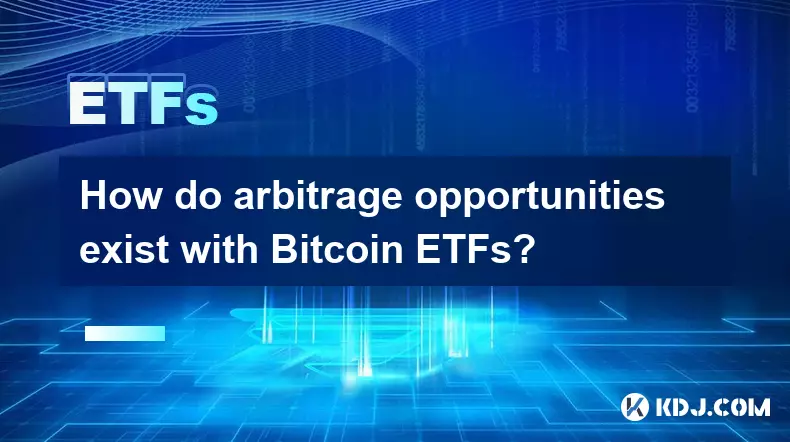
How do arbitrage opportunities exist with Bitcoin ETFs?
Sep 30,2025 at 12:36am
Understanding Bitcoin ETF Arbitrage Mechanics1. Bitcoin ETFs trade on traditional stock exchanges, allowing investors to gain exposure to Bitcoin pric...
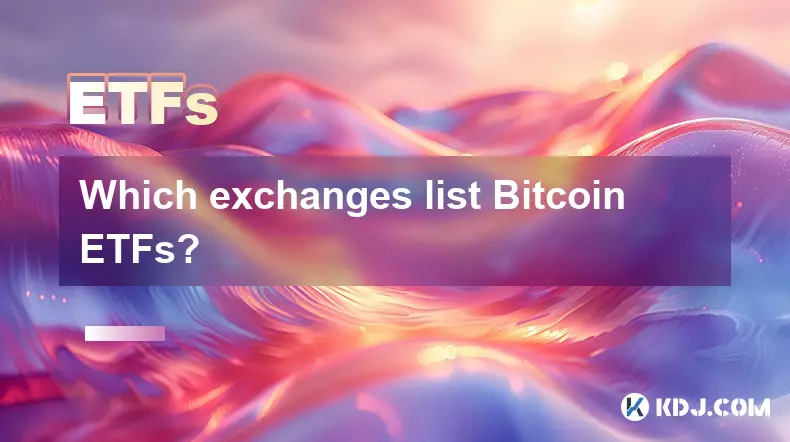
Which exchanges list Bitcoin ETFs?
Sep 26,2025 at 03:18am
Major Cryptocurrency Exchanges Offering Bitcoin ETFs1. The landscape of digital asset trading has evolved significantly with the introduction of Bitco...
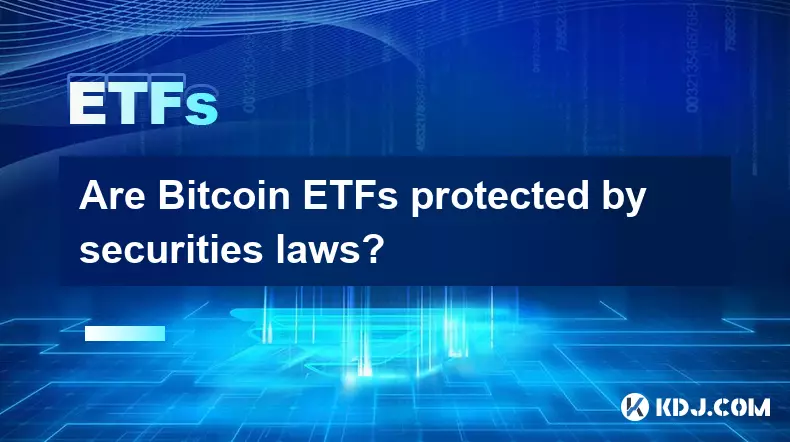
Are Bitcoin ETFs protected by securities laws?
Sep 28,2025 at 03:00am
Regulatory Framework Surrounding Bitcoin ETFs1. Bitcoin ETFs operate within the boundaries of established securities regulations, primarily under the ...
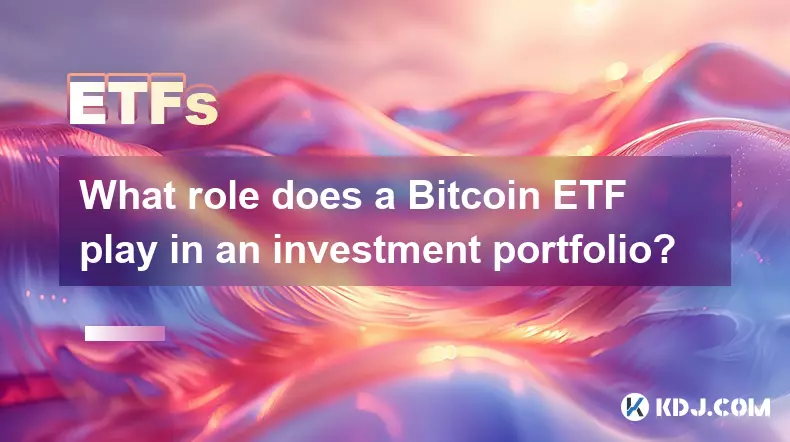
What role does a Bitcoin ETF play in an investment portfolio?
Sep 27,2025 at 12:36am
Understanding the Function of a Bitcoin ETF in Portfolio Diversification1. A Bitcoin ETF allows traditional investors to gain exposure to cryptocurren...

Is the volatility of Bitcoin ETFs consistent with Bitcoin?
Sep 26,2025 at 01:18am
Bitcoin ETFs and Their Relationship to Bitcoin Price Movements1. Bitcoin ETFs are financial instruments designed to mirror the price of Bitcoin withou...

Will Bitcoin ETFs affect Bitcoin's decentralized nature?
Sep 24,2025 at 02:00am
Impact of Bitcoin ETFs on Market Accessibility1. Bitcoin ETFs have significantly lowered the barrier to entry for traditional investors who may not be...

How do arbitrage opportunities exist with Bitcoin ETFs?
Sep 30,2025 at 12:36am
Understanding Bitcoin ETF Arbitrage Mechanics1. Bitcoin ETFs trade on traditional stock exchanges, allowing investors to gain exposure to Bitcoin pric...

Which exchanges list Bitcoin ETFs?
Sep 26,2025 at 03:18am
Major Cryptocurrency Exchanges Offering Bitcoin ETFs1. The landscape of digital asset trading has evolved significantly with the introduction of Bitco...

Are Bitcoin ETFs protected by securities laws?
Sep 28,2025 at 03:00am
Regulatory Framework Surrounding Bitcoin ETFs1. Bitcoin ETFs operate within the boundaries of established securities regulations, primarily under the ...

What role does a Bitcoin ETF play in an investment portfolio?
Sep 27,2025 at 12:36am
Understanding the Function of a Bitcoin ETF in Portfolio Diversification1. A Bitcoin ETF allows traditional investors to gain exposure to cryptocurren...

Is the volatility of Bitcoin ETFs consistent with Bitcoin?
Sep 26,2025 at 01:18am
Bitcoin ETFs and Their Relationship to Bitcoin Price Movements1. Bitcoin ETFs are financial instruments designed to mirror the price of Bitcoin withou...
See all articles










































































